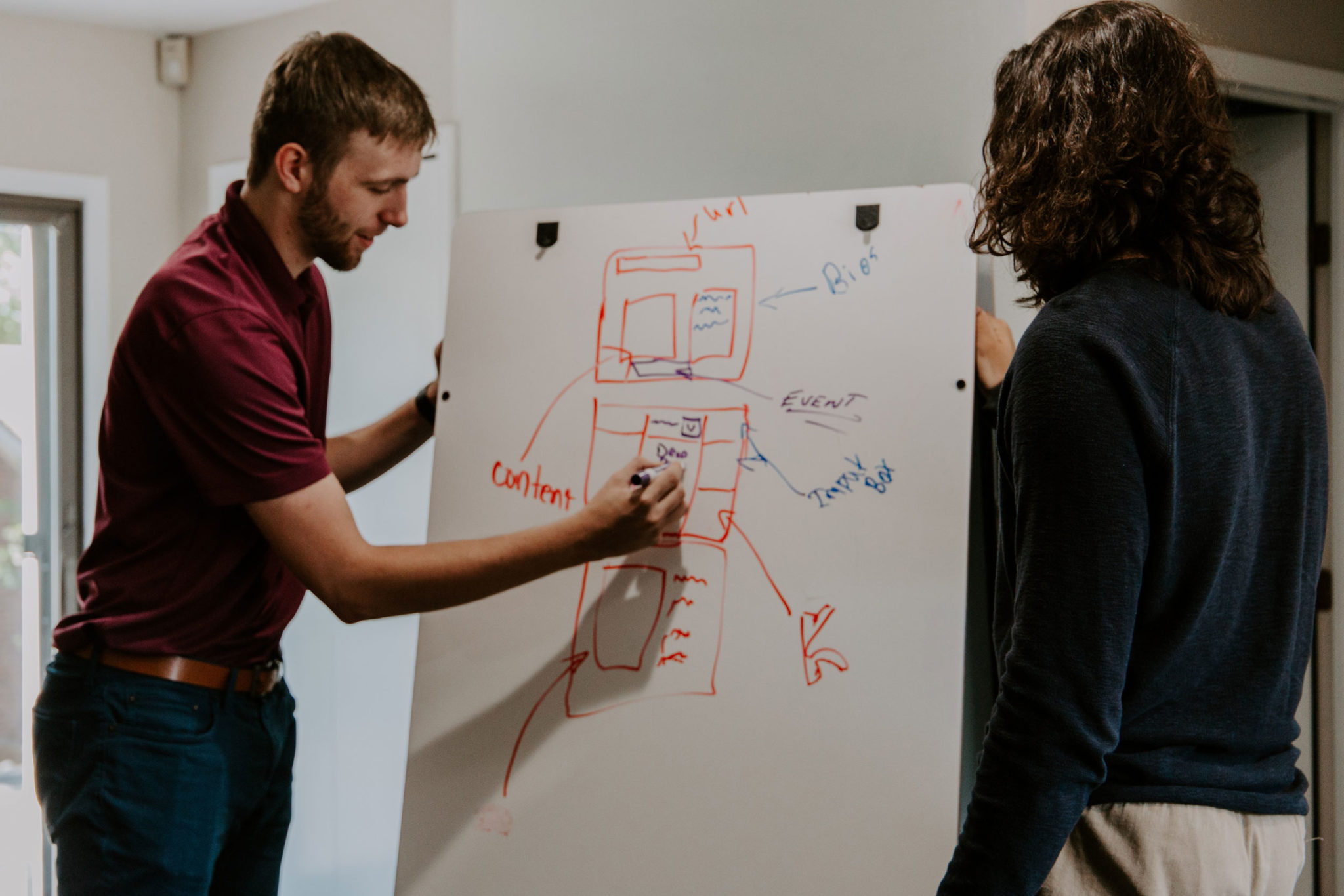Imagine you just spent several hours wrapping up writing a new eBook. You’ve written several chapters, an enticing introduction, and an almost prolific conclusion. You excitedly share your content with the project manager who shares it with the designer. This is the first time your work has been discussed with the designer and they have so many questions you didn’t think of, not to mention a few concerns. So, what now?
This moment with the designer happened because collaboration wasn’t part of your plan. You were on a solo mission, not fully considering the other expert creatives contributing to the project and how your work informs theirs.
Creatives have various ways of working and creating, especially when one creative is working on the content itself and the other is working on how to present it. These two creative experts need to be aligned from the start. This can only happen when creatives factor in collaboration and communication at the beginning of the project and consistently throughout it.
Self-help author Napoleon Hill once captured the sentiment of mutual and dependent success that speaks to this goal:
“It is literally true that you can succeed best and quickest by helping others to succeed.”
At the end of the day, writers and designers are both working towards the same goal–a stellar finished product. Whether it be an ad campaign, whitepaper, or some other piece of content, it strongly behooves both sets of creatives to factor in the success of the other when making their contribution.
What Designers and Writers are Looking For From Each Other
 There aren’t hard and fast rules for what every designer or writer is looking for but having a basic understanding of what each party would like to see or needs for their success provides clearer guidelines for how you can support your fellow creatives. Like the start of any relationship, you want to familiarize yourself with their wants and needs to see how you can help make these a reality.
There aren’t hard and fast rules for what every designer or writer is looking for but having a basic understanding of what each party would like to see or needs for their success provides clearer guidelines for how you can support your fellow creatives. Like the start of any relationship, you want to familiarize yourself with their wants and needs to see how you can help make these a reality.
What helps writers succeed can be boiled down to a few things:
- Thorough understanding of what the client wants from the finished product
- Methods for communicating with internal and external team members
- Mastery of the subject being covered
In the same sense, designers have their own baseline needs for success. Writers should use these as a template for approaching collaborative projects with designers:
- Thorough understanding of what the client wants from the finished product
- Methods for communicating with internal and external team members
- Understanding of which design tools should be used for the finished product
Notice anything similar? For both designers and writers, their baseline needs are very close. They need to have a strong understanding of what they’re being asked to do and they need to know how to communicate with members of their team and any outside team members, such as contractors and clients.
Another great way to help fellow creatives feel successful? Ask. Taking the time to get to know how a particular designer or writer works and measures success is not only helpful to inform the end goal, it also shows care for the project and the people involved.
Once you understand what fellow creatives need to feel successful, it’s time to focus on communicating with them effectively.Tips for Positive and Productive CommunicationBe RespectfulAs you would when working and collaborating with anyone, respect needs to guide every interaction. When presented with tight deadlines and often quick turnarounds, things can sometimes feel tense for everyone involved. You’re all trying to deliver an amazing product in a short period of time, and how quickly someone finishes something impacts your own deliverable timeline. Regardless of the timeframe, there’s always time to be respectful.
Delivering respect means that all communications should be thoughtful. Ask yourself, “How would I feel reading this message?” and then ask yourself, “How could someone feel reading this message?” Not everyone communicates in the same way – someone may take a message completely different than you would take it. Even if you must deliver a question or note to a fellow creative that may not be entirely positive or have some critique to it, it can still be presented positively. You can’t go wrong when you infuse positivity and thoughtfulness into any communication.
For example, instead of saying, “Why did you put the content into a sidebar?” you could say, “I noticed that you placed the content into the sidebar. I like the sidebar, but I was thinking the content would make more sense being part of the main block of text. What are your thoughts?”
Including positivity and expressing your thoughts concisely and clearly shows that you are not only respectful of what someone else has created or the thought they have put into something but that ultimately your main goal is to deliver a product that meets expectations, not just trying to move ahead of your own aims.
Respect also extends to your fellow creative’s time. The deadlines that one creative sets for themselves should always be mindful of a fellow creative’s timeline. For instance, if the first version of a designed eBook needs to be delivered to the client by end of the week, the writer should ensure not only that they have enough time to finalize the content themselves, but that the designer will have enough time to design it, amidst the other projects and responsibilities they most likely have.
 Speak Up And Voice Your Needs
Speak Up And Voice Your Needs
Communication can only happen if you’re really communicating. This does not mean that every thought needs to be relayed between creatives. Instead, rely on your gut to tell you when you should be speaking up – it never hurts to raise a potential red flag. Discussing any potential roadblocks early on can make a huge difference to how efficiently and effectively a final product is delivered.
And it’s OK not to understand everything about someone else’s process. Writers are not required to know everything about designers and designers don’t need to know everything about writers – that’s what makes each of them the experts. But asking questions when something feels unclear or uncertain is always a good idea and should be welcomed by both parties. Even if you don’t fully understand something, asking even a somewhat uncertain question can get the conversation started and help flush out needs and requirements from both writers and designers.Plan AheadAnticipating what’s to come is not only important for project management, it’s also crucial for effective ongoing collaboration. All communication and work between creatives should be part of a work-back schedule that ultimately has an end goal in mind.
Projects can take many twists and turns that aren’t necessarily expected but asking the right questions of fellow creatives upfront sets the stage for future success. Just as you would want to conduct discovery sessions with clients to learn about what they want to see most from a project, the same should be done internally with creatives. Here are some good foundational questions that creatives should ask of their fellow creatives:
- What form of communication works best for you? Email? Chat? Video conversations?
- What is most helpful for you when working with [writers, designers, etc.]?
- What has worked well for you in the past when collaborating?
- What challenges do you commonly face when collaborating?
And here are some ongoing questions that should serve as mini checkpoints between creatives:
- Do you feel like everything is being communicated clearly and effectively?
- What part of the process could be better?
- What is still needed to ensure the final product is delivered successfully?
Creatives Creating Success TogetherWhether you’re a creative, someone who frequently works with creatives, or both, thinking critically about what qualifies success for their process not only strengthens their capabilities but also supports your end goals and the success of the entire team. Not to mention, it should be a true joy to work with creatively minded counterparts. Their passion for turning nothing into something amazing will only help fuel your same passion for the new and inventive.
When creatives work to support one another, the results can be profound and long-lasting. Successful collaboration means you’re not only creating a high-quality finished product but you’re also improving the quality of work and life for you and your fellow creatives.




